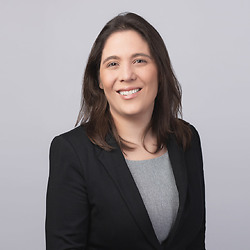TCPA Update: New Declaratory Ruling Sheds Light on “Autodialer” Definition
On June 25, 2020, the Federal Communications Commission (FCC)’s Consumer and Governmental Affairs Bureau (Bureau) issued a Declaratory Ruling that clarifies the “Automatic Telephone Dialing System” (ATDS or autodialer) definition under the Telephone Consumer Protection Act (TCPA). The ruling was issued in response to a May 2018 Petition for Clarification filed by the P2P Alliance, which, among other things, asked the Commission to clarify that peer-to-peer (P2P) text messaging platforms are not autodialers. While the ruling discusses P2P platforms specifically—it goes much further, shedding light on what constitutes an autodialer under the TCPA more broadly. The ruling is significant not simply because it addresses how the TCPA may apply to a specific messaging platform, but also because it opines on the hotly contested scope of the term autodialer. Any entity placing calls or texts using modern calling equipment should take note.
The Threshold Definition of Autodialer Under the TCPA Is the Subject of Much Debate
The term autodialer is an important prerequisite for ascertaining whether a call or a text is subject to TCPA restrictions and associated penalties. The TCPA makes it unlawful to initiate any non-emergency call using an ATDS without the consent of the party being called. Because TCPA liability—which triggers infamously steep penalties—often hinges on whether the equipment used to place calls or texts is an autodialer, the scope of the definition is highly litigated. As we have written, several federal circuit courts have considered the definition, with some construing the term broadly and other construing it more narrowly.
The FCC itself has contributed to the legal uncertainty surrounding the term autodialer. In 2015, the FCC put forth an extremely broad interpretation of ATDS, which was subsequently vacated by the D.C. Circuit in ACA International v. FCC. Since the D.C. Circuit’s decision, the FCC has sought comment—on multiple occasions—on the autodialer definition. Curiously, the P2P Declaratory Ruling makes clear that it does not resolve the broader, still-open autodialer proceeding, explaining that “[t]he details of the Commission’s interpretation of the autodialer definition remain pending in the wake of a 2018 decision of the U.S. Court of Appeals for the D.C. Circuit.” See P2P Declaratory Ruling note 2. However, as a matter of black letter law, the construction of ATDS adopted in the P2P Declaratory Ruling is now binding on the agency unless and until it is modified or overturned by the full Commission.
The P2P Declaratory Ruling Supports a Narrow Reading of the Term Autodialer
Even though the P2P Declaratory Ruling does not resolve the broader autodialer definition issues arising from the D.C. Circuit decision, it is significant because it sheds light on the agency’s current position on the scope of ATDS. Specifically—the P2P Declaratory Ruling discusses the term autodialer much more narrowly than the Commission did in 2015. In the P2P Declaratory Ruling, the Bureau:
clarif[ies] that the fact that a calling platform or other equipment is used to make calls or send texts to a large volume of telephone numbers is not probative [sic] of whether that equipment constitutes an autodialer under the TCPA. Instead, [it] make[s] clear that if a calling platform is not capable of originating a call or sending a text without a person actively and affirmatively manually dialing each one, that platform is not an autodialer and calls or texts made using it are not subject to the TCPA’s restrictions on calls and texts to wireless phones.
Id. ¶ 3. The Bureau goes on to say that “[i]f a text platform is not capable of storing or producing numbers to be called using a random or sequential number generator and dialing such numbers automatically but instead requires active and affirmative manual dialing, it is not an autodialer and callers using it are, by definition, not ‘evading’ the TCPA.”
The ruling leaves open several questions—including what “manually dialing” entails and what it means to “be capable of” meeting the definition of autodialer. But what is clear is that the Bureau’s reasoning is consistent with a narrow interpretation of the statutory definition of ATDS—one favored by legitimate businesses and other calling parties that have pushed to be able to use modern calling equipment without the high risk of staggering financial penalties that comes with the TCPA.
The P2P Declaratory Ruling Is a Win for the Organizations Utilizing These Peer-to-Peer Platforms for Important and Wanted Communications
The P2P Declaratory Ruling specifically addresses the question of whether “texts sent via a particular type of peer-to-peer messaging platforms are not subject to the TCPA’s restrictions.” Id. ¶ 1. The Declaratory Ruling does not green light all P2P platforms—explaining that: “[w]e do not rule on whether any particular P2P text platform is an autodialer because the record lacks a sufficient factual basis for us to confirm (or for commenters to assess) whether any particular P2P text platform actually works as claimed in the P2P Alliance Petition.” Id. ¶ 11. However, it does explain that “if a texting platform actually requires a person to actively and affirmatively manually dial each recipient’s number and transmit each message one at a time and lacks the capacity to transmit more than one message without a human manually dialing each recipient’s number, as suggested in the P2P Alliance Petition, then such platform would not be an ‘autodialer’ that is subject to the TCPA.” Id.
In short, leaving the open question of the scope of the word “capacity” aside, the Bureau granted the P2P Alliance Petition to the extent that P2P platforms require human intervention to dial numbers. This is a significant win for P2P platforms, which are used by a variety of entities and organizations, including schools, non-profits, and campaigns.
The P2P Declaratory Ruling Follows Several Other TCPA Items the FCC Has Cleared in the Past 6 Months
The P2P Declaratory Ruling is the most recent in a series of TCPA actions.
-
In December 2019, the Bureau issued a Declaratory Ruling granting a petition filed by Amerifactors Financial Group, LLC regarding faxes sent to online fax services. There, the Commission held that “an online fax service that effectively receives faxes ‘sent as email over the Internet’ and is not itself ‘equipment which has the capacity . . . to transcribe text or images (or both) from an electronic signal received over a regular telephone line onto paper’ is not a ‘telephone facsimile machine’ and thus falls outside the scope of the statutory prohibition.” Amerifactors Declaratory Ruling ¶ 3.
-
Also in December 2019, the Bureau released an Order “grant[ing] a limited waiver to AmeriCredit Financial Services Inc. d/b/a GM Financial (GM Financial) that will allow it to satisfy the Commission’s identification requirements for artificial or prerecorded voice calls by providing customers with its ‘doing business as’ (d/b/a) name, GM Financial.” GM Financial Order ¶ 1.
-
In March 2020, the Bureau issued a Declaratory Ruling to “confirm that the COVID-19 pandemic constitutes an ‘emergency’ under the [TCPA[ and that consequently hospitals, health care providers, state and local health officials, and other government officials may lawfully communicate information about the novel coronavirus as well as mitigation measures without violating federal law.” COVID-19 Declaratory Ruling ¶ 2.
-
And on June 25—the same day that it published the P2P Declaratory Ruling—the Bureau also issued a Declaratory Ruling about health care-related calls and text messages in response to a petition from Anthem, Inc. The Anthem Declaratory Ruling denies the Anthem Petition, which asked for the FCC to exempt both healthcare plans and providers from the TCPA’s prior express consent requirements for calls and text messages made to wireless numbers. In doing so, the Bureau affirmed that “callers must get consumers’ prior express consent before making autodialed calls or robocalls.” Anthem Declaratory Ruling ¶ 2. Interestingly, both the Anthem and P2P Declaratory Rulings also discuss how callers may obtain prior express consent.
To be sure, there is still a sizable backlog of pending TCPA petitions before the FCC. But in the last six months, we have seen an uptick in TCPA actions from the Bureau. While most of these actions have addressed relatively discrete topics, the P2P Declaratory Ruling is the first to touch on the broader, threshold TCPA issues left open in the wake of the D.C. Circuit’s ACA International decision. Whether the agency will continue this effort and resolve those issues remains to be seen.




